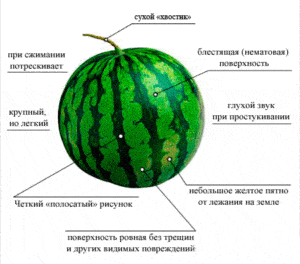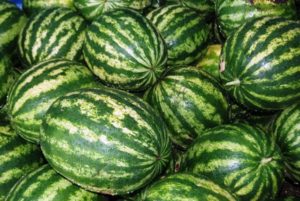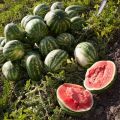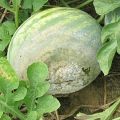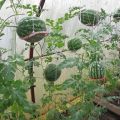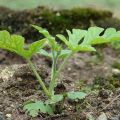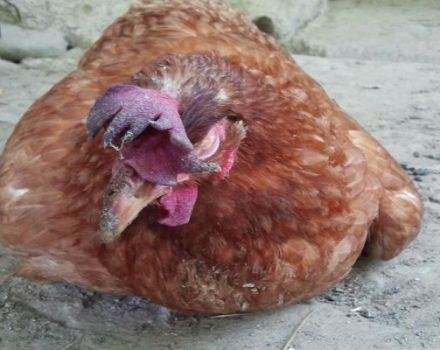Technology for growing watermelons in the open field, soil selection, formation and care
Often gardeners plant watermelons in their summer cottages to enjoy their juicy fruits in the summer. However, not everyone manages to get a high-quality harvest, since special knowledge is needed to grow melons and gourds. Therefore, you need to familiarize yourself in advance with how the cultivation of watermelons is carried out.
Content
- 1 Features of planting watermelons in different regions
- 2 Selection and preparation of watermelon seeds for sowing
- 3 Choosing a landing site
- 4 We prepare and fertilize the soil
- 5 Growing seedlings
- 6 Shaping and pinching
- 7 Rules for feeding and caring for the plant
- 8 How often to water
- 9 Harvesting and storage
- 10 What diseases and pests are melons susceptible to: methods of control
- 11 Conclusion
Features of planting watermelons in different regions
Watermelons are considered heat-loving plants that have a long growing season. It is recommended that you familiarize yourself with the technology of growing this crop in areas that differ in climatic features. Residents of the southern regions with a warm climate can plant melons and gourds immediately in open ground. Due to the high temperature, bushes and fruits will grow rapidly. It is much easier to get a good harvest when growing the plant in warm regions.
In the northern regions, the air temperature is much lower, so watermelons ripen worse. Due to the harsh climate, many gardeners are unable to achieve high yields.
When growing melons and gourds in such regions, certain rules are followed:
- only varieties with early ripening are used for planting;
- to create optimal conditions for the germination of seedlings, the seed must be planted in greenhouses or under film shelters;
- planting is carried out by seedling method;
- to improve the growth of the root system, all seedlings are watered between rows;
- to obtain medium-sized fruits, no more than six ripe berries are left on each bush, and two fruits are left to harvest the largest harvest.
Selection and preparation of watermelon seeds for sowing
Before you start sowing watermelons at home, you need to tackle the selection and preliminary preparation of the seed.
Choice
It is recommended to pre-select the seeds that will be planted in the future. When choosing, each seed is carefully examined to look for any signs of damage. The damaged seeds are discarded immediately, as they are not suitable for planting.
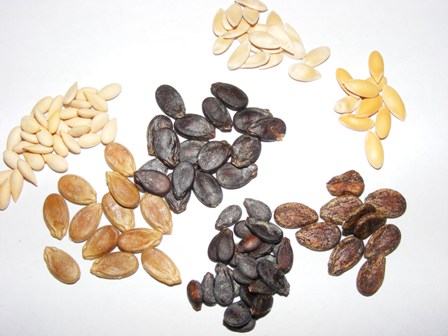
Also, when choosing the highest quality seed, pay attention to its variety.Experienced gardeners advise planting hybrid varieties, as they are resistant to weather changes and common diseases.
Training
To get strong and healthy seedlings, you will have to do the preliminary preparation of seeds in advance, which consists of several activities:
- Disinfection. Before sowing, all the seeds will have to be disinfected so that they will not be exposed to diseases in the future. When carrying out disinfection, all seeds are soaked in manganese liquid for 25-30 minutes. Then they are laid out on a towel and dried thoroughly.
- Warming up. Gardeners strongly recommend warming up watermelon seeds, as this promotes their germination. The procedure is performed very carefully so as not to accidentally overheat the seeds. To warm up, all the planting material is dipped for half an hour in a container with water heated to 45 degrees.
- Scarification. During this procedure, the shell of the watermelon seed is carefully pierced. This speeds up the process of seed germination several times. Scarification should be done 2-3 weeks before planting.
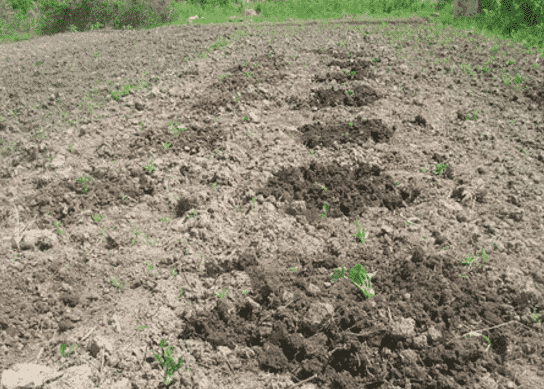
Choosing a landing site
To grow a high-quality crop in the open field, it is necessary to select the most suitable site for watermelons in advance. When choosing a place in the garden, pay attention to the characteristics of the soil. For melons and gourds, sandy and sandy loam soils, which are rich in nutrients, are ideal. The level of illumination of the site is also taken into account, since due to a lack of light, the yield may deteriorate. Therefore, experts do not recommend planting seeds or seedlings in shaded areas, under trees or fences.
When choosing a place for planting watermelons in a summer cottage, the compatibility of this culture with other plants should be taken into account.
Watermelon seedlings grow well in vegetable gardens, where black radish was grown for a long time. This vegetable saturates the soil with phytoncides, which protect crops from spider mites and other pests. Also, gardeners recommend planting melons and gourds near tomatoes and parsley, as they drive away moth and sawflies.
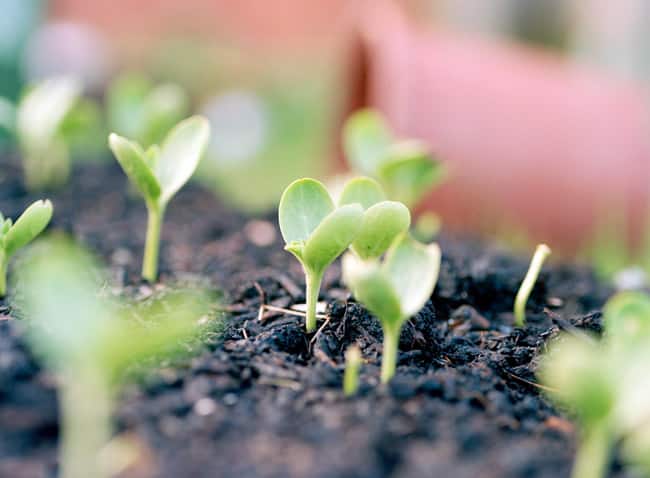
However, there are several plants with which watermelons are incompatible. Do not plant them after peppers, potatoes, strawberries and eggplants, as these vegetables suck out a lot of nutrients from the soil that watermelon plants need.
We prepare and fertilize the soil
Having chosen a site for planting a plant, they begin preliminary preparation and fertilization of the soil in which the watermelon seedlings will be grown. The black earth should be loose and contain nutrients that will accelerate the growth of seedlings. Soil preparation technology consists of several successive stages.
- Determination of the level of soil looseness and acidity. If the land on the site has an increased level of acidity, you will have to water it with chalk or lime mortar. Heavy soils are pre-fed with biohumus to increase looseness.
- Adding mineral dressings to increase yields. In the first few weeks after planting watermelons, mineral fertilizers are added to the soil, in which nitrogen predominates. This component activates the growth of seedlings, due to which fruits are tied earlier on the bushes. Also, the site is fed with phosphorus-containing dressings, which increase the seedlings' resistance to temperature extremes.
- Organic introduction. To saturate the soil with useful microelements, it is imperative to fertilize it with organic fertilizing. It is recommended to evenly distribute bird droppings with humus over the area, then loosen the ground and water it with warm water. To improve the yield of watermelons, you can moisten the soil with herbal infusion mixed with wood ash.

Growing seedlings
When using the seedling planting method, gardeners have to cultivate seedlings, which will be transplanted into the garden in the future. It is recommended to familiarize yourself in advance with the features of planting seeds and replanting grown seedlings to a permanent place.
Planting watermelon seeds
Sowing seeds is carried out when they have sprouted a little and white sprouts have appeared on their surface. When carrying out planting work, all the seed is planted in pots with soil mixture. About 2-4 seeds are sown in each container, so that in the future you can get rid of weak seedlings and leave only the healthiest seedlings. Seeds are sown to a depth of 3-5 centimeters.
When all the watermelon seeds have been planted in pots, they are covered with plastic wrap and transferred to a well-lit room.
In the first 5-7 days, pots with planted watermelons should be in a room with a temperature of at least 23 degrees. After the first shoots appear, the film is removed from the pots, and the containers with the seedlings are transferred to a room with a temperature of 15-17 degrees.
Transplanting seedlings
Growing seedlings of watermelons in pots should be before the first three leaves appear on the seedlings. After that, the seedlings must be transplanted to a permanent place. To do this, rows are marked along the entire site, on which holes are made for further planting. The depth of each hole should be about 8-10 centimeters so that the roots can be completely underground.
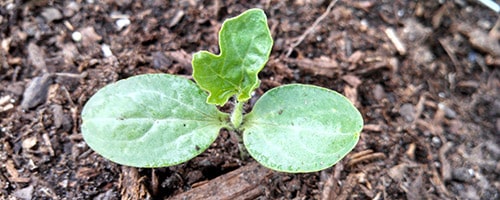
Each hole is watered with warm water, after which the seedlings are carefully planted in the ground. Then the holes are covered with soil and re-moistened with water.
Shaping and pinching
Experienced gardeners recommend regularly stitching melons and gourds. This procedure is carried out to improve the yield and accelerate the development of watermelon berries. Most often, pruning of lashes is carried out when growing plants in open ground, since in greenhouse conditions it is not necessary to engage in the formation of bushes. In order to form seedlings correctly, you need to familiarize yourself with the features of removing unnecessary stepsons.
There are three main methods of pinching, which are most often used by gardeners:
- Side shoots grazing. This method is considered universal, as it is suitable for any type of melons and gourds. During the procedure, 1-2 shoots are left on the main stem. In this case, the ovaries are completely removed on all lateral stems.
- Trimming the side stems. Using this method of pinching plants, you will have to completely remove the shoots. Only a few lashes are left on the main stem, and the rest is cut off.
- Formation into several stems. This is the most common method and does not need to be cut off completely. 2-4 side lashes are left on the bushes. Moreover, each of them should have 2-3 ovaries. If there are more of them, then all excess fruit set is removed.

Experts recommend that all activities related to the formation of bushes be carried out only on sunny days. This will prevent the cuttings from rotting and speed up the drying of the cut lashes.
Rules for feeding and caring for the plant
It is recommended to properly care for melons and gourds, since without care it will not be possible to get a high-quality harvest. The quality of the fruits directly depends on the introduction of fertilizing into the soil at all stages of growing watermelons.
When sowing
Before planting the seed, they must feed the soil. To do this, the earth is mixed with a liquid that is prepared from humus. Then the site is treated with wood ash and bone meal, which increases the permeability of oxygen in the soil.
When landing in open ground
Some people prefer to grow watermelon bushes in the open field, so they immediately plant seeds in the garden.Before this, the land on the site is mixed with green manure plants, which are considered the best top dressing for strengthening the roots.

When blooming
When pollination and flowering of the bushes begins, it is recommended to add more top dressing with potassium to the ground. This substance promotes the appearance of new flowers on seedlings, due to which the yield increases significantly. Gardeners advise to spray watermelons with Kelik and Nutrivant once a month.
At the beginning of fruiting
At the initial stage of fruiting, it is necessary to take seriously the feeding of each bush, since due to a lack of nutrients in the soil, yield deteriorates. Often few berries are tied on the bushes due to a lack of boron.
Therefore, to improve the formation of ovaries and ripening of fruits, it is necessary to periodically spray the area with Megafol and Boroplus.
Fertilizer for the fetus
Correct scheme fertilization of watermelon seedlings promotes the ripening of berries. To make the fruits more watery and tasty, the plants are regularly sprayed with Uniflor and Terraflex.
How often to water
Before you start growing melons and gourds, you need to familiarize yourself with the features of their watering. In the first weeks after the emergence of shoots, the plant needs increased watering, since its root system is weakened. With a lack of moisture, seedlings grow poorly and gradually wither. Also, more often it will be necessary to moisten the soil during the formation of flowers and the setting of the first fruits. During such periods, the seedlings are watered at least four times a week.
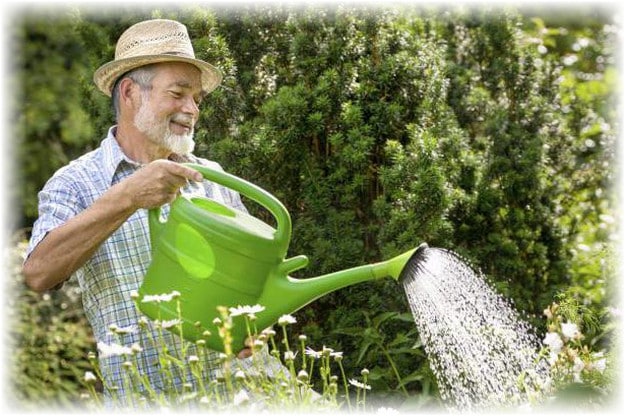
Experts advise to moisten the soil in the afternoon, when the sun begins to set. In the daytime, it is not worth moistening the soil, since due to the high temperature and sunlight, moisture will evaporate faster. For irrigation, use settled water at room temperature. Watering the bushes with too cold liquid is contraindicated, as this can lead to rotting of the root system and further death of watermelons.
Watering of melons and gourds ceases to be engaged after the fruit is fully ripe.
Harvesting and storage
If the agricultural technology for growing watermelons has been fully followed, the ripe crop can be harvested 35-50 days after planting. However, sometimes watermelon berries ripen ahead of time. To make sure that the fruits are ripe, inspect the color of their pulp and seeds. The seeds should be dark brown in color and the flesh should be pink with a reddish tint. The rind of ripe watermelons should be firm and rough.
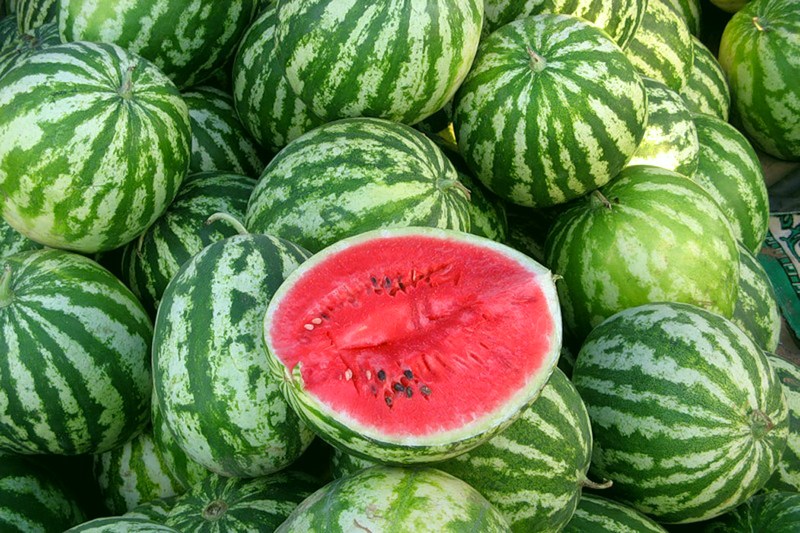
The harvested crop is best stored on high shelves with shelves, which are located at a distance of 55-65 centimeters from each other. Each shelf should be covered with a thin layer of peat or straw. Such a coating will increase the shelf life of the crop. During storage, watermelons are carefully examined every month. All rotten fruits are thrown away so that rot does not spread to neighboring berries.Monthly processing of fruits with a lime solution will help protect the crop from rotting.
What diseases and pests are melons susceptible to: methods of control
Often melons grow poorly due to pest attacks or the development of diseases:
- Anthracnose. The presence of such a pathology can be determined by the brown spots that appear on the leaves of watermelons. To get rid of the symptoms of anthracnose, all infected bushes are treated with Bordeaux liquid and Cuprozan's solution.
- Bacteriosis The disease damages the leaves, on the surface of which oval white spots appear. It is impossible to cure bacteriosis, so infected watermelons are dug up and burned.
- Mite. Due to the dry weather, young watermelon seedlings are often attacked by spider mites. Insects feed on sap from leaves and stems, which makes the bushes dry. A mixture made from onions and garlic will help to cope with the pest.
Conclusion
Many summer residents plant their plots with watermelon bushes.To grow them correctly, you need to familiarize yourself with the peculiarities of planting melons and gourds and caring for them.
